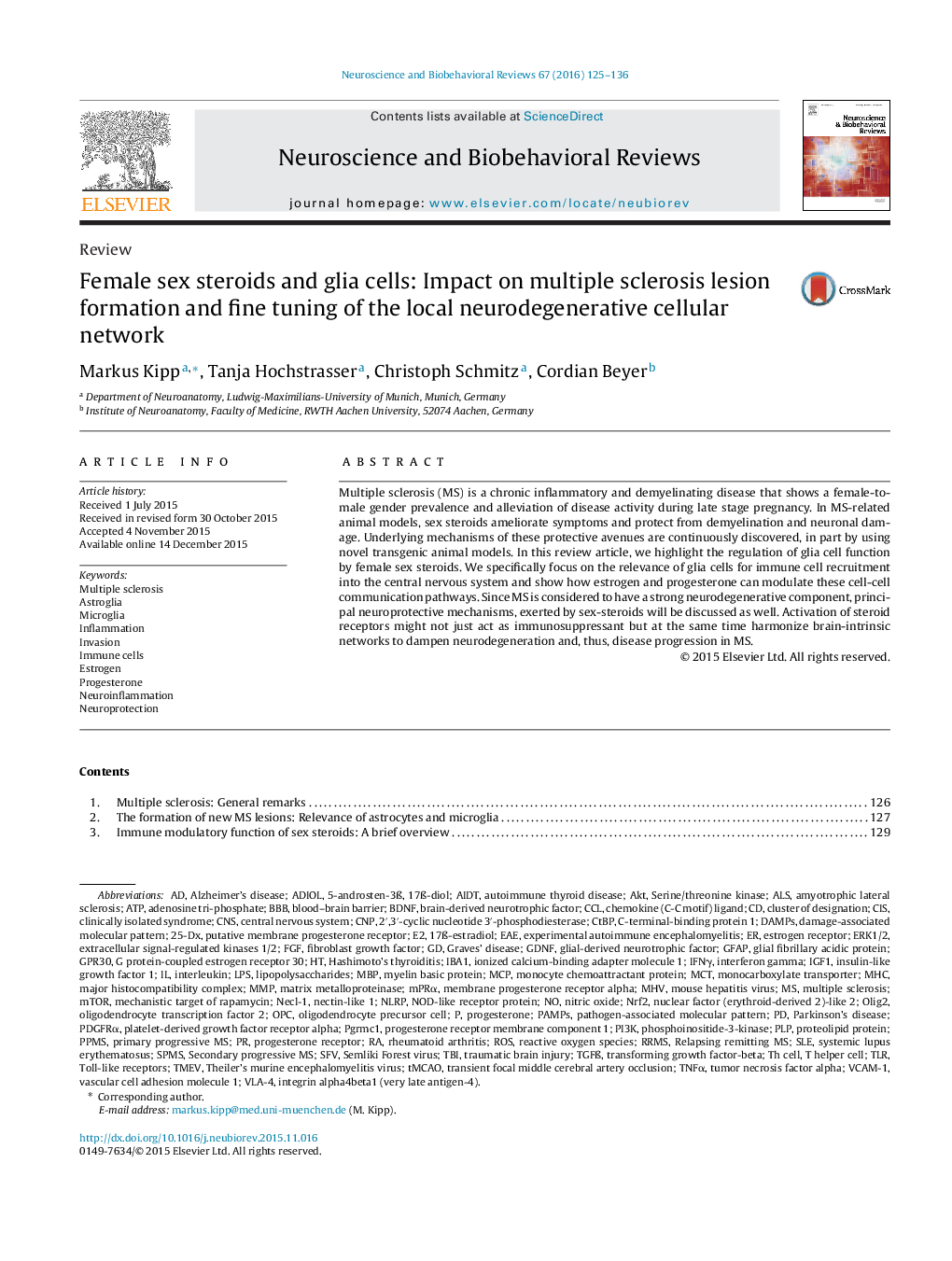| Article ID | Journal | Published Year | Pages | File Type |
|---|---|---|---|---|
| 937407 | Neuroscience & Biobehavioral Reviews | 2016 | 12 Pages |
•Local glia cells regulate immune cell recruitment in multiple sclerosis.•Sex hormones are protective in multiple sclerosis.•Glia–glia cell communication is pivotal for multiple sclerosis pathology.
Multiple sclerosis (MS) is a chronic inflammatory and demyelinating disease that shows a female-to-male gender prevalence and alleviation of disease activity during late stage pregnancy. In MS-related animal models, sex steroids ameliorate symptoms and protect from demyelination and neuronal damage. Underlying mechanisms of these protective avenues are continuously discovered, in part by using novel transgenic animal models. In this review article, we highlight the regulation of glia cell function by female sex steroids. We specifically focus on the relevance of glia cells for immune cell recruitment into the central nervous system and show how estrogen and progesterone can modulate these cell-cell communication pathways. Since MS is considered to have a strong neurodegenerative component, principal neuroprotective mechanisms, exerted by sex-steroids will be discussed as well. Activation of steroid receptors might not just act as immunosuppressant but at the same time harmonize brain-intrinsic networks to dampen neurodegeneration and, thus, disease progression in MS.
